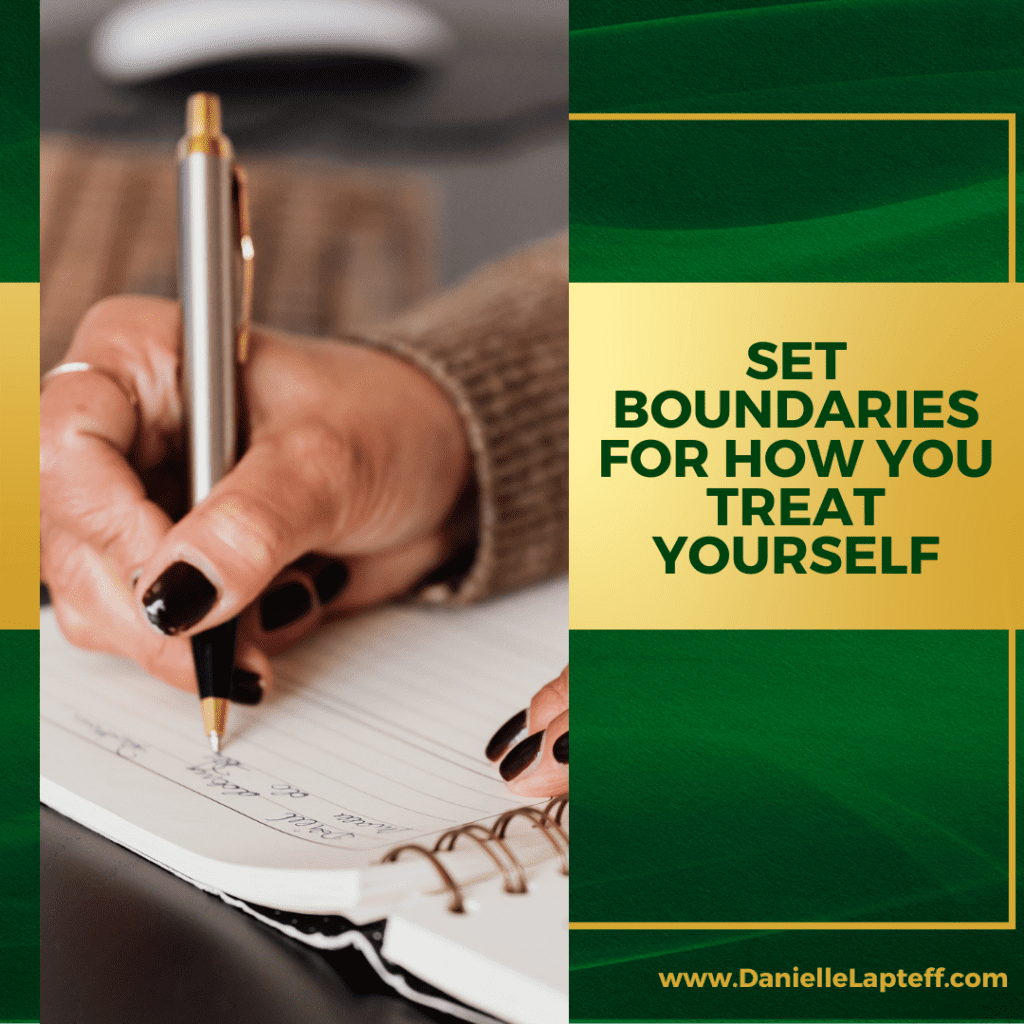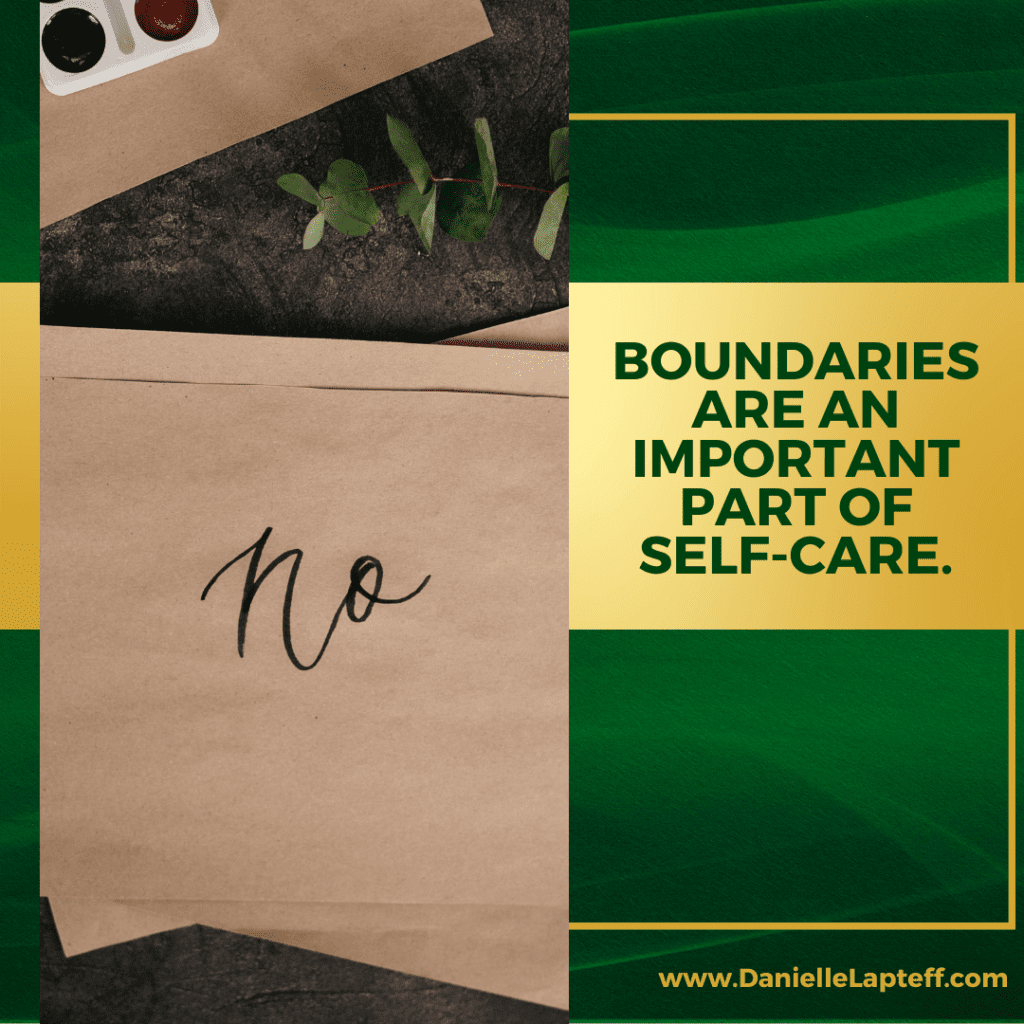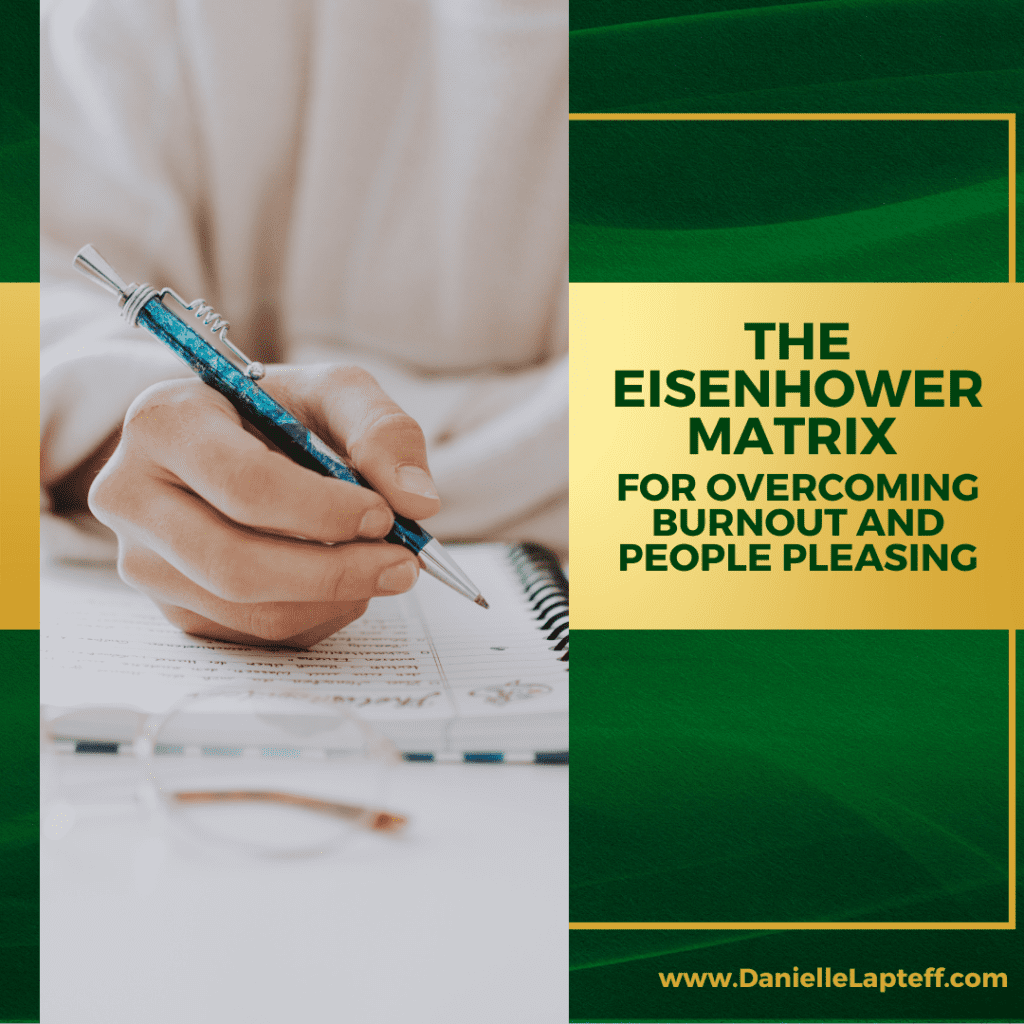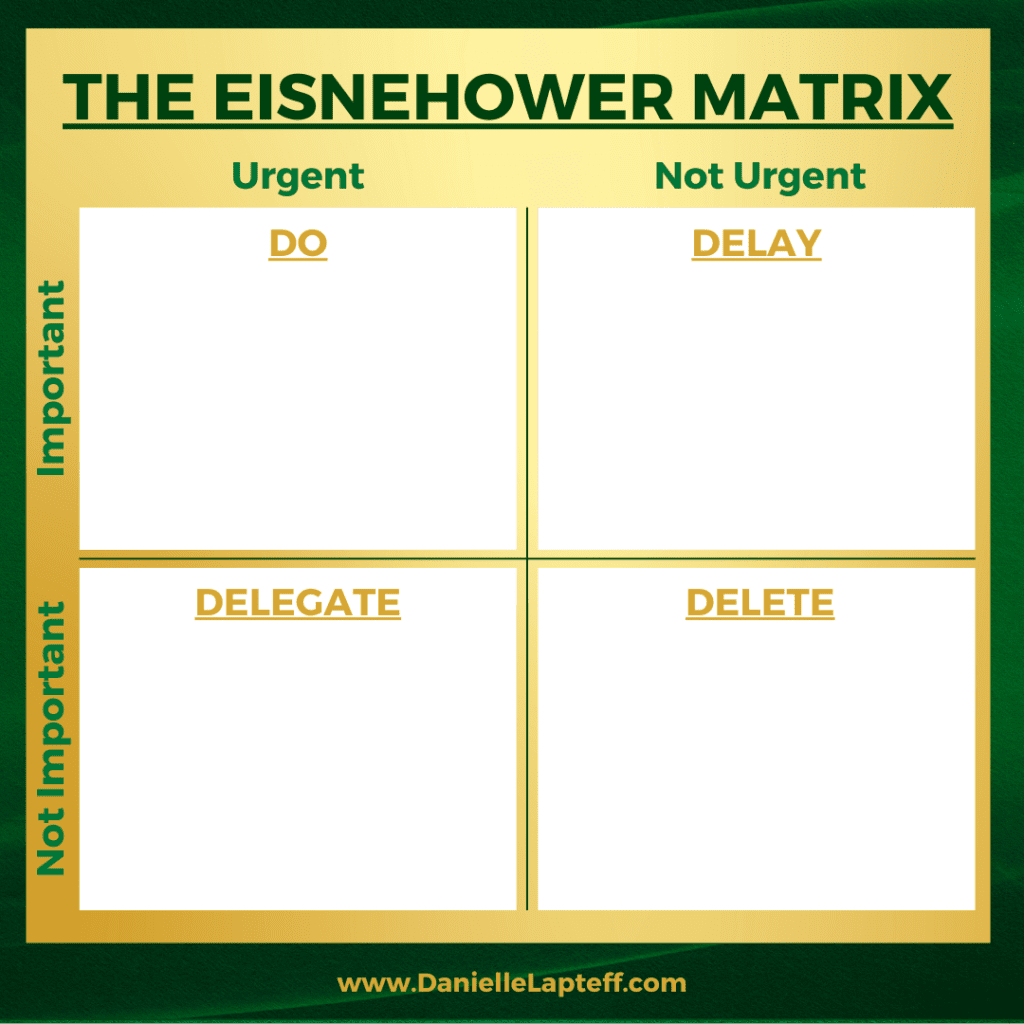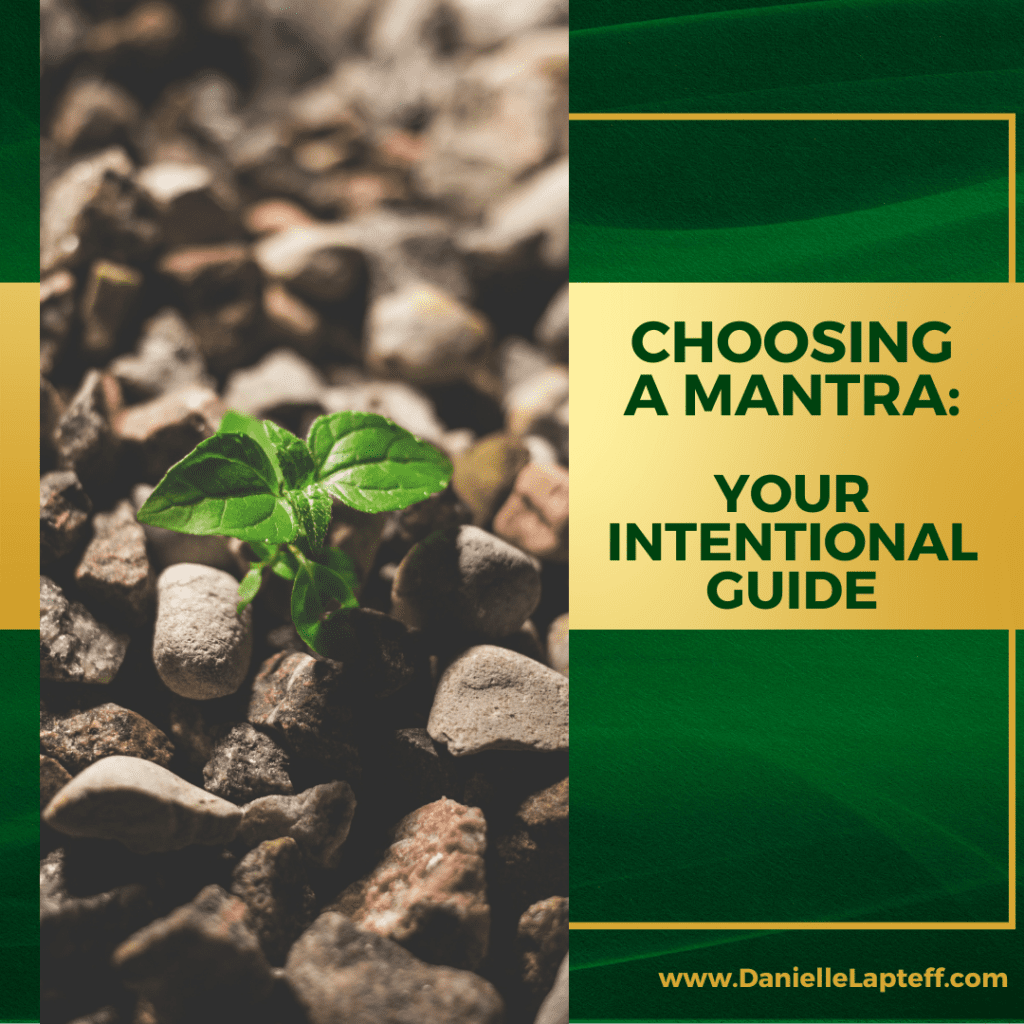Last week, I spoke about boundaries and how they are a necessity when it comes to self-care. I wanted to expand on that, because while the boundaries you set for the relationships in your life are crucial, so are the boundaries you set for self-treatment. So today, I’m focusing on those. This ranges from things like your routines to self-talk and more.
Just like the boundaries we set in relationships, personal boundaries for how we treat ourselves are important for building a healthier and more fulfilling life. I believe they are the foundation for almost every area of our lives and determining how things will play out.
Ditch the negative self-talk:
The first step I recommend in self-boundaries would be addressing negative self-talk. Set limits on your self-criticism and establish a positive internal dialogue. Pay attention so that you can recognize harmful thoughts and actively replace them with affirmations. Remember, the things you say and think directly affect the things you feel and believe. This means that curbing that negative self-talk can greatly improve your quality of life. And so a commitment to speak to yourself with kindness and compassion is a great start to setting your boundaries with yourself.
Prioritizing self-care over neglect:
Next, I’d say to set clear boundaries between self-care and self-neglect. Figure out the things that genuinely rejuvenate your mind and body, and commit to making time for them. Whether it’s a relaxing bath, reading a book, or practicing mindfulness and meditation, these moments need to be non-negotiable. You don’t need to be ‘busy’ all of the time. You just need to be intentional.
Make sure you’re getting quality sleep:
Moving on to your quality of sleep; this is a really important one. Set a consistent sleep schedule, create a bedtime routine, and make getting a good night’s sleep a priority. By setting this boundary with yourself to guarantee that you get the rest you need, you’re investing in both your mental and physical health which means you’ll feel better and even be more productive. Some other bonuses from this are better cognitive function and emotional resilience.
Find a balance with work and personal life:
Another big boundary to set is the separation or balance between work and personal time. This is especially important for entrepreneurs who often work crazy hours at crazy times. Overworking can lead to burnout and compromise your overall well-being. So it makes sense that we need to be firm on setting limits. Learn to say no to excessive work demands and create a schedule that allows for both productivity and relaxation. Also make sure that you’re getting some ‘me time’ every single day.
Pay attention to your nutrition.
Setting boundaries around nutrition involves making conscious choices about what you consume. Prioritize nourishing your body with wholesome foods, and establish limits on indulgences that are negatively affecting you. Listen to your body’s signals and respond with mindful eating. This might mean a little more time, effort or work, but the convenient and quick solutions are not always the answer. By making sure that your body is getting the nutrients that you need, you’ll feel better and have more energy. Odds are you’ll probably also see positive effects on things like your hair and your skin when you’re making sure that you’re getting the proper nutrition, along with less aches in your muscles and joints. Your mood and focus could also improve depending on what your current diet looks like and the changes that you put into motion.
Exercise and movement are important too.
I also recommend creating boundaries around exercise or movement that promote a healthy relationship with physical activity. It doesn’t have to be a hardcore workout. Choose things that bring you joy and make sure it aligns with your energy levels and capabilities. For some this could mean things like yoga or walking. For others it could mean swimming or kickboxing. The important part is just to get your body moving.
How to set these boundaries:
(This is where I recommend breaking out the journal to form your plan.)
Start by thinking about your current habits and areas that might need adjustment. Clearly note these boundaries to yourself. Make sure that you’re viewing your commitments to yourself with the same importance as you would view your commitments to others. Be firm in enforcing them, but also give yourself grace. It can take time to establish new normal which will probably feel very uncomfortable at first. Like I mentioned last week, our brains are wired for the familiar. So even if a new thing is super positive compared to the old thing that might even be outright toxic, our brains struggle to make the transition with ease. It does get easier- don’t give up after one hard day.
Let your boundaries adapt with you.
Just as your boundaries with others are going to change as your life and experiences change, so should the boundaries you have with yourself. Be open to adjusting them as you grow and be sure to check in every once in a while to make sure that they are still having a positive effect in your life. Again, this is where journaling can be super helpful. Pay attention to how your new boundaries make you feel and what changes you see in your life. Change them up when they’re no longer effective or practical for your situation.
You don’t have to do it alone.
Overall, the biggest thing is that by choosing self-love and well-being, you are choosing you. I applaud you for that choice and wish you all of the success. If you should need some additional help or guidance along the way, I’m here. Feel free to reach out to me. And again, I also offer one on one coaching as well as a free facebook community for additional support. You can check get more info by clicking the links, and of course feel free to reach out to me with any additional questions.
